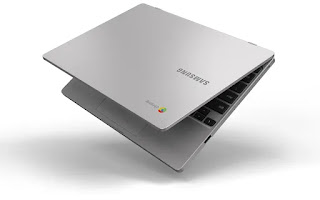A Chromebook refusing to power on can be incredibly frustrating, but before you panic, there are several simple steps you can take to bring it back to life. Here's a comprehensive guide to troubleshooting a non-responsive Chromebook:
1. Check the Power Source
The most common culprit for a dead Chromebook is a simple power issue. Begin by ensuring the charger is securely plugged into your Chromebook and a functioning wall outlet. Look for a small LED light near the charging port – it should illuminate when the device is receiving power. If the light isn't on, try a different outlet or swap out the charger with a known working one.
If your Chromebook has both a power key and a physical power button, try pressing the button directly. Sometimes the power key on the keyboard fails, while the physical button remains operational.
2. Assess the Battery
If your charger is working and the Chromebook still won't power on, the battery might be the issue. If your Chromebook only boots while plugged in, a battery replacement is likely required.
There's also a chance the battery isn't properly communicating with the charger. Some users have reported that using a low-watt USB-C phone charger can "reset" battery issues. If you've exhausted other options, this might be worth a try.
Replacing a Chromebook battery can be a bit tricky, so it's best left to a professional unless you're comfortable with electronics repair. Opening your Chromebook to replace the battery will void your warranty. However, certain models are easier to repair than others, and websites like iFixit offer detailed tutorials for most Chromebook models.
3. Disconnect External Peripherals
External devices like mice, keyboards, and headphones can sometimes cause a Chromebook to fail to power on. This could be due to a device drawing too much power or a software bug.
Disconnect all external devices and attempt to power on your Chromebook. If it turns on, plug devices back in one at a time to identify the culprit. Alternatively, consider disconnecting less-essential peripherals if you find that your Chromebook struggles with multiple devices plugged in simultaneously.
4. Clean the Charging Port
Dirt and grime can accumulate in the charging port, preventing proper power delivery. Deep cleaning might be necessary. A can of compressed air can effectively remove most debris.
For stubborn or sticky residues, use a plastic toothpick to gently remove them. Avoid wooden toothpicks, as they can splinter and create further problems.
If the port is particularly dirty, use a flattened cotton swab dipped in 70% isopropyl alcohol to wipe it clean. Alternatively, electronics cleaners are excellent for this task.
5. Troubleshoot the Display
If your Chromebook shows signs of life but the screen remains off, there might be an issue with the display. Chromebooks completely shut off their screens at the lowest brightness setting. Try repeatedly pressing the brightness increase key to see if this resolves the problem.
You can also attempt to connect your Chromebook to an external display using an HDMI cable. If the external display works, the internal screen might need professional repair.
6. Reinstall or Repair ChromeOS
If your Chromebook can power on but fails to boot properly, a ChromeOS reinstall or repair might be necessary. Follow these steps:
Press Esc + Refresh + Power simultaneously and hold them until the screen changes.
Choose "Recover using internet connection" if available. If not, you'll need to create a recovery USB drive.
Download the Chromebook Recovery Utility and follow the prompts to create recovery media.
Insert the USB drive into your Chromebook and wait for it to verify the contents.
Once validated, ChromeOS will automatically install.
7. Hard Reset (Powerwash) Your Chromebook
A hard reset, or powerwash, can resolve many boot issues. This process will erase all data, so ensure you have a backup before proceeding.
Power on your Chromebook and hold Ctrl + Alt + Shift + R.
Select "Powerwash" from the prompt.
Wait for the reset process to complete.
Professional Assistance
If none of these troubleshooting steps work, it's time to seek professional assistance. While repair costs can vary, you can rest assured knowing that a professional can diagnose and fix the problem efficiently.




0 comments:
Post a Comment